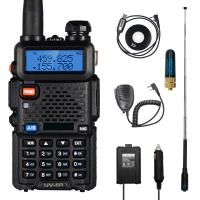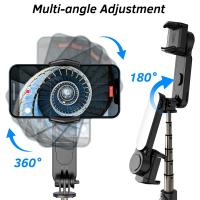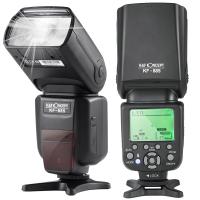How To Find Out My Voice Range?
Understanding your vocal range is crucial whether you are an amateur singer, a public speaker, or someone who just wants to explore the limits of their voice. Vocal range refers to the span of notes that your voice can produce, from the lowest to the highest. Determining your voice range can not only help you choose appropriate songs and roles but can also guide you in training your voice properly to avoid strain and injuries.
Step 1: Warm Up Your Voice

Before you start assessing your range, it's essential to warm up your voice. Just as athletes stretch before a workout, your vocal cords need preparation to reach their full potential. You can start with some simple humming, lip trills, or scales.
Why Is This Important?
Warming up helps to relax your vocal cords, increases blood flow to the area, and prepares your voice for more extensive use. It minimizes the risk of strain or injury, which is particularly crucial if you are going to explore the extents of your vocal capabilities.
Step 2: Understand the Basics of Musical Notes

To measure your vocal range, you’ll need a basic understanding of musical notes. Musical notes are often depicted on a staff, and they follow a specific order. The most common range spans from the lowest note, usually C, up through the middle ranges, and up to the highest note, also usually C, covering multiple octaves.
Why Is This Important?
Understanding musical notes will give you a language to describe your range. For instance, knowing that you can sing from a low E2 to a high G5 provides concrete information, compared to simply saying you have a "low" or "high" voice.
Step 3: Find Your Lowest Note

1. Use a Piano or Keyboard App: If you have a piano or can access a piano keyboard app, use it to find your starting note.
2. Start Low: Begin singing at what you believe is your lowest comfortable note.
3. Go Lower: Gradually lower your pitch one semitone at a time until you reach the lowest note you can sing without straining.
4. Check for Comfort: Make sure you're not pushing your voice too hard. If a note feels uncomfortable or sounds rough, move a half step higher.
5. Identify the Note: Once you identify your lowest note that you can sing comfortably and clearly, write it down.
Why Is This Important?
Finding your lowest note helps establish your base range, and knowing how low you can go will inform the type of songs or roles that may best suit you.
Step 4: Find Your Highest Note

1. Use a Piano or Keyboard App Again: Start from middle C or a comfortably high note on your instrument.
2. Start High: Begin singing at what you believe is your highest comfortable note.
3. Go Higher: Gradually increase your pitch one semitone at a time until you reach the highest note you can sing without straining.
4. Check for Comfort: Similar to finding your lowest note, ensure you are not pushing your voice too hard.
5. Identify the Note: Once you identify the highest note you can sing comfortably and clearly, write it down.
Why Is This Important?
Knowing your highest note allows you to complete your vocal range profile. It helps you choose songs and roles that are within your capability and avoid those that could cause strain or damage.
Step 5: Combine Your Findings
Once you have determined both your lowest and highest comfortable notes, you can combine these findings to describe your vocal range. For example, if your lowest note is E2 and your highest note is G5, your vocal range spans from E2 to G5.
Why Is This Important?
This comprehensive understanding helps you in several ways:
- Song Selection: You can pick songs that stay within your range.
- Vocal Training: Knowing your range allows you to work on extending your limits safely.
- Roles and Parts: If you're in a choir or musical theatre, you can select parts that match your vocal capacity.
Step 6: Consult a Vocal Coach or Use Online Tools
If you’re uncertain or want a more professional assessment, consider consulting a vocal coach. They can provide a more nuanced analysis and offer guidance to expand and protect your voice.
Alternatively, there are several online tools and apps designed to help you determine your vocal range. These tools usually have you sing along with a piano track and automatically detect your range.
Why Is This Important?
A vocal coach can provide personalized feedback and techniques specific to your needs. Online tools offer a convenient and often free way to gain additional insights into your vocal capabilities.
Practical Applications of Knowing Your Vocal Range
1. Improved Song Selection for Performances: Knowing your range helps you choose songs that best fit your voice, enabling you to deliver your best performance without overstressing your voice.
2. Enhanced Vocal Health: Awareness of your range allows you to avoid pushing your voice beyond its comfortable limits, helping to prevent vocal damage and promote longevity in singing.
3. Better Choir Placement: If you participate in a choir, understanding your range ensures that you are placed in the correct section (soprano, alto, tenor, bass), which can enhance the overall harmony and sound of the choir.
4. Effective Practice Sessions: Knowing your range allows you to focus on specific areas for improvement and helps in selecting suitable vocal exercises to work on extending and strengthening your range.
5. Confident Auditions: When auditioning for roles, musicals, or choirs, knowing your range can give you the confidence to choose audition pieces that showcase your vocal strengths, increasing your chances of success.
Determining your vocal range is an empowering exercise that offers numerous practical benefits. From improved song selection to enhanced vocal health, knowing your limits and working within them can enhance your singing experience and performance quality. Always warm up your voice, use reliable methods to find your lowest and highest notes, and consider consulting a vocal coach for professional guidance. By taking these steps, you'll be better equipped to use your voice to its fullest potential while keeping it healthy and strong.





































There are no comments for this blog.